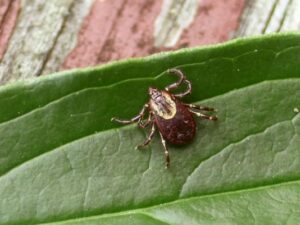Anaplasmosis
When a cow is bitten by an infected tick, the incubation period is usually between 5 to 14 days. In the case that a tick injects infected blood, the incubation period is shorter; 2 to 6 days. When a cow is infected with the Anaplasma bacteria, various symptoms can occur such as: fever, abortion and a decrease in production of both milk and meat. Respiratory problems can also occur. The Anaplasma bacterium settles in the white blood cells, so it can lower the immune response. Furthermore, the animal’s coat looks dull, breathing and heart rates are usually elevated, and there is a loss of appetite.
Babesiosis
If a cow is infected with Babesiosis, various symptoms can occur such as; high fever, rapid pulse and breathing, anaemia, jaundice, blood water, listlessness, lack of appetite and possible death. After a tick bite, the incubation period for Babesia divergens is usually 1 to 3 weeks.
Anaplasmosis
Anaplasma is a bacterium that thrives in different types of white blood cells. Diagnosing an Anaplasmosis infection can be done by means of a microscopic analysis of the blood.
Babesiosis
Babesia is a parasite that thrives in several types of red blood cells. Diagnosis of an infection with Babesia can be done by means of a microscopic analysis of the blood. The test checks to see if the bacterium is present in the red blood cells. A serological test is also possible. Antibodies against Babesia are detectable only 7 to 10 days after the onset of symptoms. The standard serological test for Babesia is the immunofluorescence test.
Anaplasmosis
An Anaplasmosis infection is usually treated with antibiotics, but studies have yet to prove if the treatment fully eliminates the infection. Always consult your vet. Reducing the chance of an infection is your best bet. Avoiding high risk grazing areas is key.
Babesiosis
There are products that reduce tick infestation, but no sufficiently effective registered products for treating cattle against ticks are available. It is best to avoid tick infestation by fencing off high risk areas of the pasture; ie near brushes and rugged areas. In addition, the presence of ticks on the animal can be monitored alertly.


